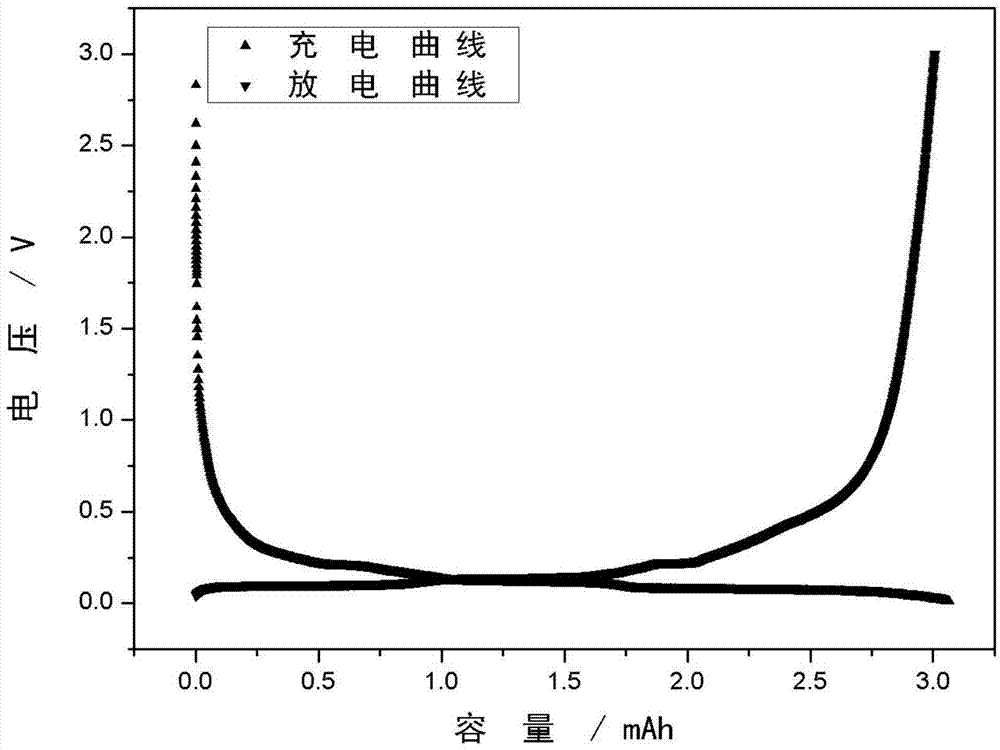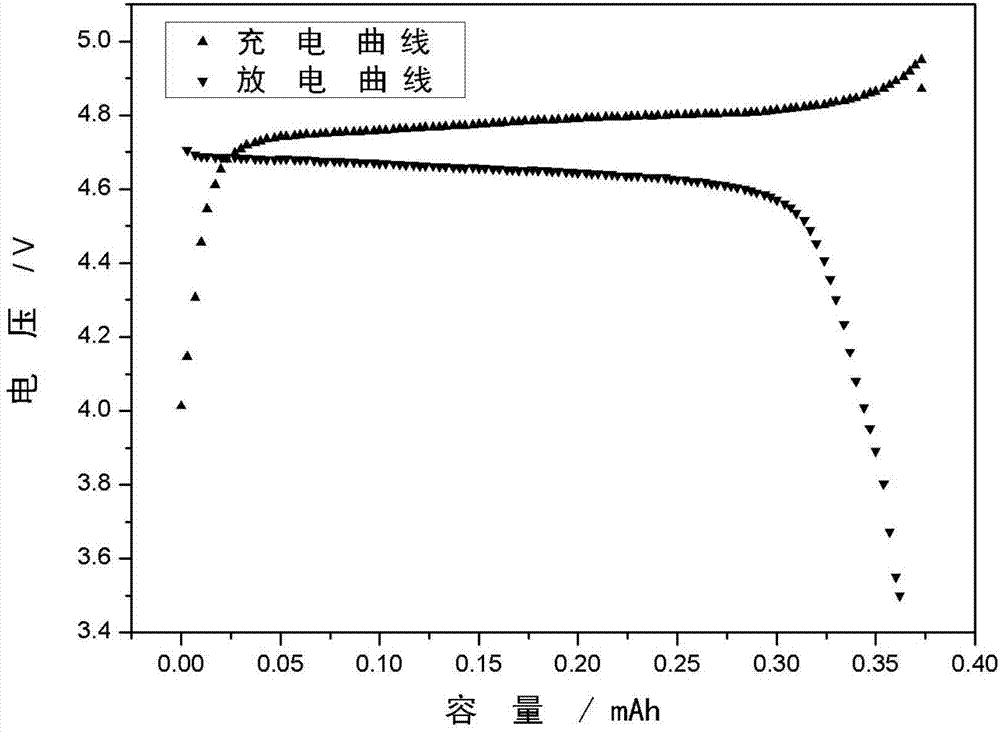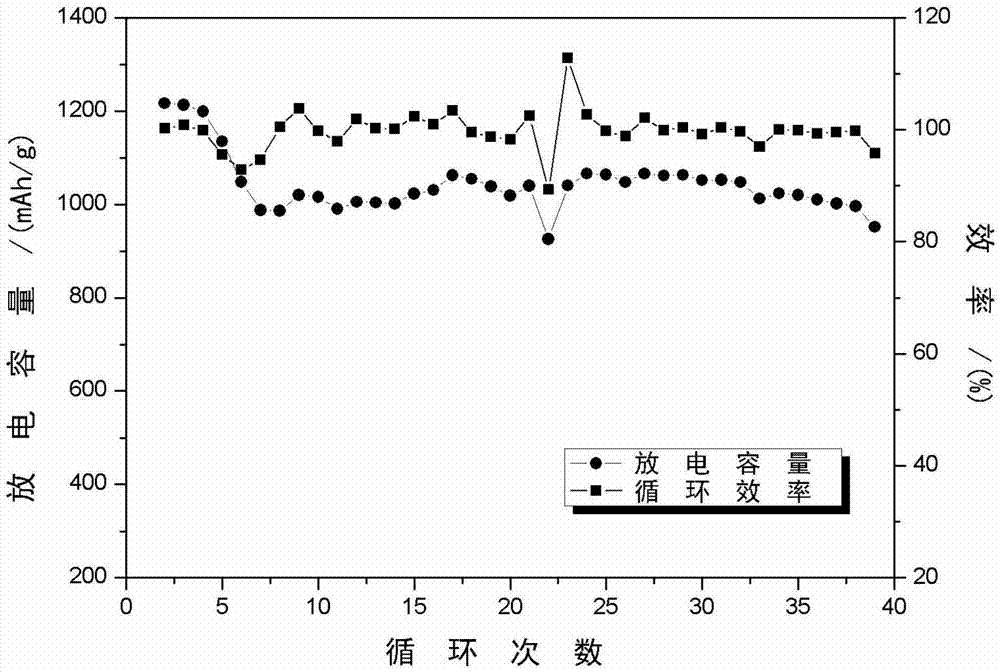Electrolyte for high-voltage lithium battery and high-energy lithium battery including electrolyte
An electrolyte and high-voltage technology, which is applied in the field of high-voltage lithium battery electrolyte and high-energy lithium battery using this high-voltage electrolyte, can solve the problem of limiting the use and development of high-energy density batteries, and there is no good scientific explanation and mathematics. Model, reduce battery life and other issues, to achieve the effect of ensuring capacity, not easy to solidify, and improving cycle life
- Summary
- Abstract
- Description
- Claims
- Application Information
AI Technical Summary
Problems solved by technology
Method used
Image
Examples
Embodiment 1
[0037] LiPF 6Dissolve LiDFOB and LiDFOB respectively in the electronic grade organic solvent fluoroethylene carbonate (FEC), propylene carbonate (PC) and dimethyl carbonate (DMC) mixed solvent with water content lower than 10ppm. The mass ratio of 20 parts of PC and 60 parts of DMC is configured as a mixed solvent, and electrolyte salt is added to it to dissolve, among which LiPF 6 The concentration of LiDFOB is 1.0mol / L, and the concentration of LiDFOB is 0.1mol / L.
[0038] Use the Mettler Karl Fischer C20 coulometric moisture tester to test the water content of the electrolyte ≤ 10ppm; use the acid-base titration method to titrate the acidity of the electrolyte ≤ 15ppm; use the Mettler conductivity meter FE30 to test the electrolyte at 25°C and - The conductivity at 40°C, the conductivity at 25°C is ≥10.88ms / cm, and the conductivity at -40°C is ≥0.8ms / cm; the wetting performance of the electrolyte tested by the contact angle tester is good. After all items are qualified in...
Embodiment 2
[0045] Mix 20 parts of FEC, 20 parts of PC and 60 parts of DMC evenly, after testing that the water content is less than 10ppm, refrigerate and add electrolyte salt LiPF 6 and LiDFOB, where LiPF 6 The concentration of LiDFOB is 1.0mol / L, the concentration of LiDFOB is 0.1mol / L, and 1.2% of additive 1-3-propane sultone is added thereto.
[0046] The production and testing of the battery are the same as in Example 1.
Embodiment 3
[0048] Mix 20 parts of FEC, 40 parts of PC and 40 parts of DMC evenly, after the water content is less than 10ppm, refrigerate and add electrolyte salt LiPF 6 and LiDFOB, where LiPF 6 The concentration of LiDFOB is 1mol / L, the concentration of LiDFOB is 0.05mol / L, and 1.2% of additive VC is added.
[0049] The battery manufacturing and testing methods are the same as in Example 1.
PUM
| Property | Measurement | Unit |
|---|---|---|
| Conductivity | aaaaa | aaaaa |
| Conductivity | aaaaa | aaaaa |
Abstract
Description
Claims
Application Information
 Login to View More
Login to View More - R&D
- Intellectual Property
- Life Sciences
- Materials
- Tech Scout
- Unparalleled Data Quality
- Higher Quality Content
- 60% Fewer Hallucinations
Browse by: Latest US Patents, China's latest patents, Technical Efficacy Thesaurus, Application Domain, Technology Topic, Popular Technical Reports.
© 2025 PatSnap. All rights reserved.Legal|Privacy policy|Modern Slavery Act Transparency Statement|Sitemap|About US| Contact US: help@patsnap.com



